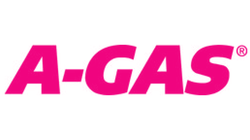Brazing, debrazing best practice for replacement compressors
Any brazing or debrazing must only be carried out after recovery of any excess gas in the system, and following the introduction of an inert gas such as Oxygen Free Nitrogen (OFN) into the pipework, A-Gas South Africa National Sales Manager Michael Labacher highlights.
“It is critical to expel oxygen from the internal system so as to prevent flash-ignition of hot oil, a particular problem when debrazing welded connections on replacement compressors,” Labacher comments. He adds that OFN inhibits oxidisation of internal copper pipes and fittings.
Oxy-acetylene torches are often used to ‘unsweat’ copper fittings. An established and accepted practice, this is however extremely hazardous and unsafe, as heat from a naked flame can result in the ignition of any expelled refrigerant and oil mist. A side-effect is that trace quantities of refrigerant will also decompose as a result, and generate toxic fumes.
SafeWork NSW, the workplace health and safety regulator for New South Wales in Australia, recently issued a safety report, following a spate of incidents whereby air-conditioning engineers suffered severe burns following the ignition of refrigerant and oil mixtures during servicing.
In the cases reported, an oxy-acetylene torch was the culprit. Although non-flammable R22 was used, residual pressure in the system released a refrigerant and oil mixture from the pipe joint, resulting in a flash fire.
Labacher warns that both engineers and technicians must be made aware of the potential for fire during brazing operations. Gloves and goggles should be worn as standard Personal Protective Equipment (PPE), while an adequate risk assessment also needs to be carried out. A dry-powder fire extinguisher must be on hand at all times during hot works.
“Technicians are often unaware of products on the market that can assist them in the field. For example, A-Gas South Africa not only offers a wide range, but can supply recovery cylinders to capture unwanted gas for recovery or destruction, as well as handy portable-sized OFN cylinders for purging and pressure testing,” Labacher concludes.
Ends
Notes to the editor
To download hi-res images for this release, please visit http://media.ngage.co.za and click the A-Gas link to view the company’s press office.
About A-Gas
A-Gas is a leader in the supply and lifecycle management of speciality chemicals. This includes: refrigerants, blowing agents, industrial gases, halon and fire protection agents used in industries operating in the HVAC, refrigeration, insulation, solvent, manufacturing and medical sectors. Delivering innovative and sustainable solutions for environmentally-sensitive gases and chemicals for more than 20 years, A-Gas offers a tailored ‘one-stop shop’ solution of products and services, helping its clients meet their regulatory obligations responsibly and sustainably.
Media Contact
Nomvelo Buthelezi
NGAGE Public Relations
Phone: (011) 867 7763
Fax: (086) 512 3352
Cell: 083 4088 911
Email: nomvelo [at] ngage [dot] co [dot] za
Web: www.ngage.co.za
Browse the NGAGE Media Zone for more client press releases and photographs at http:/media.ngage.co.za

